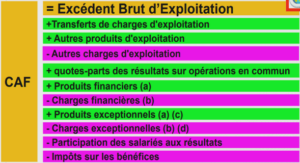Spatial organization
Forest management planning involves the integration of silvicultural treatments, economic concepts, and ecological and social objectives that are present in an ecosystem. Planning is done hierarchically from coarse to fine scales through space and time, divided into strategic, tactical and operational levels. The objective is to predict the future amount of harvest, optimize the use of resources, and maintain and develop current habitats (Bettinger et al., 2009). Strategic planning focuses upon the long-term and the landscape level. The landscape is defined as a spatial mosaic of arbitrary boundaries containing different areas that interact functionally (Turner, 1989). Tactical and operational planning is conducted over the short-term and at small scales, where spatial organization is being integrated into the process. Spatial restrictions are necessary for the development of forestry activities, to meet ecological and environmental objectives that can only be achieved through spatial monitoring (Baskent, Emin Z. et Keles, 2005). The spatial organization that is defined in the planning process determines the structure of the landscape, which refers to the relative spatial arrangement of harvested sites and the interconnections between them (Baskent, Emin Z. et Jordan, 1995).
Spatial organization is a key process in the management of environmental, social and economic aspects of today’s forests (Baskent, Emin Z. et Keles, 2005). Spatial forest planning has emerged as the study of patterns and trends in the landscape that is focused upon forestry and natural resource management activities (Bettinger et Sessions, 2003). The distribution of harvest sites deals with environmental protection areas, habitats of species of interest or loss of connectivity, and the influence of profitability for the forestry industry. The study of spatial forest planning has recognized economic benefits that can be brought to forest businesses (Baskent, Emin Z. et Keles, 2005), such as the reduction of road construction and operational costs with logistic controls (Baskent, E.Z. et Jordan, 1991; Öhman et Eriksson, 2010) and seasonal effects (D’Amours et al., 2008). Many optimization programs have been developed to integrate spatial variables into the planning process (Favreau et Ristea, 2016; Weintraub et al., 2007). Quantifying spatial organization requires a method of describing and representing variability in space and time (Gustafson et Crow, 1998). Spatial pattern organization can be described and measured at the scale of the minimum management unit or that of their relationships in the landscape. The range of measurement indices includes size, shape, juxtaposition and distribution of management units (harvest areas, corridors, protected areas), minimum and maximum limits of harvesting on- site, adjacency (regeneration delay), restrictions, fragmentation, and aggregation and dispersion (Baskent, Emin Z. et Keles, 2005). Spatial statistics can be used directly to calculate the spatial distribution of cut-blocks (Baskent, Emin Z. et Jordan, 1995).
Spatial organization in Quebec
The Canadian forest industry provides a wide range of social, economic and environmental benefits (Mobtaker et al., 2017). Canada has 7.7% of the world’s forest cover and the Province of Quebec encompasses around 25% of the Canadian forest (MFFP, 2017). To manage this resource, the Quebec Ministry of Forests, Wildlife and Parks (Ministère des Forêts, de la Faune et des Parcs, MFFP) implemented the Sustainable Forest Management Act in 2013 – Chapter A 18-1 – (Légis Québec, 2013). This act provides wood supply guarantees that are based upon processing mill capacity and available species on each Forest Management Unit (FMU), which represent spatial divisions of the territory under management of forest activities. The Act establishes the planning process to be carried out through the integrated forest management plan. The operational plan includes the spatial forest organization, where the areas of forest interventions or harvest blocks are established geographically for one to two years with the measures to reduce negative effects of the harvest. Planning is performed for potentially harvestable areas by watershed, which represent twice what is required for the harvest of the year. With this wide range of options, companies make their selections and develop their activities according to their economic and transformation requirements.
Based upon the plan, the areas that are finally selected are presented in the annual forest management activities program (PRAN), with yearly details of blocks within the harvest sites, their locations, sizes and shapes, harvesting practices, and infrastructure (roads). In the context of annual preparation and programming, companies within the territory agree upon which available sectors will be harvested in the coming year; the MFFP ensures that their selections respect the strategy and harvesting permits that specify volume and species requirements. Spatial determination of harvest blocks serves as the main resource from which companies create their logistical work-steps. This procedure must include transportation schedules, road construction and maintenance programs, and wood flow between forest and the mills. It considers the weather affecting harvest operations in terms of accessibility of both roads and harvest areas and makes sure that these factors fulfill the demand (Karlsson et al., 2003). After harvesting, companies are required to submit a complete annual report that includes all activities that were performed in public forests, including harvest sites, silvicultural activities such as planting, and infrastructure construction. This report facilitates MFFP monitoring prior and following forest activity (Légis Québec, 2013).
Ecosystem Management in Quebec
Forest planningin Quebec, as defined by the new legislation (Chapter A 18-1, Légis Québec 2013), has established and ecosystem forest management (EFM) of publicly owned forests. This multi-objective approach implements sustainable forest management by ensuring responsible stewardship of the territory’s resources, ensuring the supply of wood to processing companies, and directing forest protection activities. The objective is to reduce the differences between natural and managed forests, as inspired by the natural dynamics of the forest (Ministère des Forêts de la Faune et des Parcs, 2015). Natural disturbances promote biodiversity within ecosystems because they change structural and functional resource conditions, thereby allowing regeneration and release of suppressed trees (Attiwill, 1994). By knowing the disturbance’s characteristics (severity, size, frequency), it is possible to establish the natural dynamics of the forest in each region and define the harvesting practices that would subsequently imitate natural spatial patterns, together with the irregular shapes and sizes of the disturbances (Bergeron et al., 1999; Gauthier et al., 2008; Latrémouille et al., 2013). Bioclimatic domains represent a higher level in the hierarchical ecological land classification system of western Quebec, which is used as a tool for planning forest operations and management. The bioclimatic domains represent the combination of the potential vegetation and physical characteristics of the territory (MRN, 2003).
These follow a gradient running from North to South, moving from the dominance of coniferous species to that of broadleaves, to describe different forest compositions and dynamics. Natural disturbances and harvesting practices are closely related to the north-to-south gradient in Quebec’s bioclimatic domains (Bergeron et al., 1999). Natural disturbances can be divided at the stand level in those that affect the forest overstory (e.g., insect epidemics, windthrow, and tree falls), which are more common in southern domains, and those that affect the tree canopy, soil layers and natural regeneration (e.g., catastrophic wildfire), which occur in northern domains. Fire disturbance variability is characterized by a combination of size, frequency and severity (Bergeron et al., 2002). Harvesting practices differ between bioclimatic domains in western Quebec, as described by Moulin (2018), who further noted that clear-cutting is the most common harvest practice in the north domain while partial cuts are more commonly found in the south domain.
The concept of performance refers to the accomplishment of a task that is measured against levels of accuracy, completeness, cost and speed (Shannon, 1998). Given that performance is mostly based upon perceptions, it must be defined in terms of setting tangible goals, developing key performance indicators, then defining, tracking and measuring their suitable metrics, and making managerial adjustments that anticipate the expected results (Drolet et LeBel, 2010; Vom Brocke et Rosemann, 2010). The importance of measuring performance is identifying possible elements for improvement and be competitive. This is especially important in the forest industry in Canada because the nation has the largest trades balance at the world level (data from 2013) yielding $19.3 billion annually. In 2017, the sector accounted for 7.2% of national exports (Natural Resources Canada, 2018). In the Province of Quebec, there are 287 primary processing companies and nearly 1500 secondary and tertiary processing companies, which generate around 90 000 direct jobs in wood products, furniture and paper manufacturing, together with printing, forestry and exploitation (MFFP, 2017).
Performance could be measured using non-efficiency indicators, such as product quality or client satisfaction, which are practices that emerged recently to integrate the different dimensions of the business. Traditional performance has been measured by financial indicators, which often have greater importance at strategic planning levels (Gunasekaran et al., 2001). Using financial measures of performance is advantageous because they represent elements of evaluation that will help to manage effective and efficient operations. Moreover, they are used as a mechanism of control and motivation. Efficiency is thus the major objective of any business organization, including the logging sector (Austin, 2002). In the forestry sector, the indicators that are often used to measure performance are cost per unit measurement, profitability, revenues, wood procurement costs, and net present value (Borges et al., 2017; Holmesa et al., 2002). Profits and wood procurement costs are the simplest measures that can be directly obtained from the activity.
LIST OF FIGURES |




